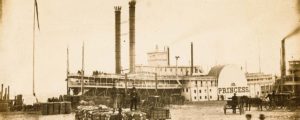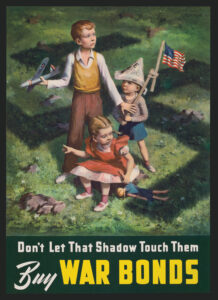

Y2K Minus 135
Have you ever really thought about what daily life was like in the world of the 1860s? Reenactors and living historians spend a fair amount of time, effort, and money at this task, trying to learn enough about the ways of the past that they can present at least reasonable facsimiles of Civil War Americans. Most of us, however, come to the Civil War with the modern world as our only frame of reference. So, for the sake of better understanding, let’s drop into an average town somewhere in the East, whether North or South, in 1860, and take a 360-degree picture of the place, the time, the atmosphere.
First of all, ixnay on the full-surround photo capability; no digital cameras and CD-ROM’s here. Photographs are made on glass or metal plates coated with light-sensitive goo, and require the subjects to stand absolutely still for several seconds while natural light works its magic through the lens. (The photo can be in 3-D, though, as you’ll find out in our next issue.) The street you’re standing on is probably just dirt, though cities had their cobbled avenues, and some highways were laid with planks, log halves, or even macadam.
You’ll notice obvious things first: no cars, no exhaust. No airplanes. No power lines. No traffic lights. No thumping bass from maxed-out stereos. But there is traffic, and if the town you popped into is more of a city, you can expect traffic jams, speeders, terrible accidents, and rubberneckers. The engines of the day are horses and mules (and oxen in the country), and they come with their own offensive emissions. As for the power lines, well, you’ll start noticing that come sundown. Not that the whole town will go dark; no, there will be gas street lamps in bigger towns, and either gas or whale-oil lighting will illuminate the homes and businesses almost–though not quite–to the same brightness we know today, but with a decidedly yellowish tinge. More frugal homes will flicker with candlelight or the glow of a fireplace.
The lack of electrical power means, of course, that you’re going to have to come up with more organic ways to entertain yourself. Want to hear the hit songs? Get out the sheet music and unlock the piano. If it’s drama or comedy you’re looking for, let’s hope you’ve popped into a town the traveling theater companies visit. And if you’re hoping to call in some pizza or Chinese food, you’ll have to wait a while; Alexander Graham Bell is only 13 years old. Supper will have to be made from scratch, using fire, and with fresh and perhaps pickled or salted ingredients. The canning of produce is still a bit iffy, so people tend to feel safer about trusty old pickling and salting methods. That way, at least there will be some food in the pantry in the winter while the garden is barren–yes, you raise many of your fresh vegetables yourself, in a garden out back.
Okay, let’s snap back to the present, before we get saddled with 1860-style chores. Few of us would give up the lifestyle we enjoy today and the leisure time we have gained as a result of technology. But knowing about the realities of day-to-day life in the past helps us better understand the history we find so fascinating, and to appreciate what we have. And, as we listen to the doomsayers who forecast the end of civilization as a result of our computers’ “Year 2000 Problem,” perhaps it lets us smile knowingly–while we stash away our candle supply and plan our 1860s garden patch!
Jim Kushlan, Editor, Civil War Times

© 1998, Cowles History Group, Inc., a division of Cowles Enthusiast Media. Allrights reserved.
Reproduction in whole or in part in any form or medium without express
written permission of Cowles Enthusiast Media is prohibited.




